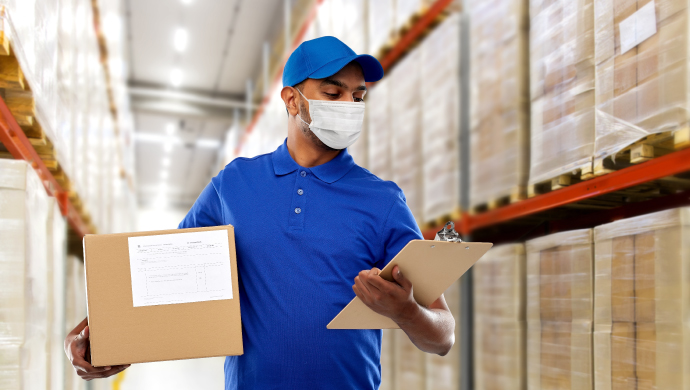Press Release: GFS Global Returns Pro
GFS levels the playing field with GFS Global Returns Pro
London, 17 August 2020: After reviewing the reverse logistics market, GFS has selected ZigZag’s cutting edge technology to launch their new returns solution, GFS Global Returns Pro. GFS powers delivery for fast-expanding B2B and B2C eCommerce retailers worldwide, providing multi-carrier services, technology and expertise to manage the entire logistical process from checkout to doorstep. GFS Global Returns Pro, specifically aimed at SMEs and larger online retailers, packages together the global technology platform with 200+ multi-carrier services, plus expertise from GFS, into a single solution. It gives customers a fast and easy way to request a return in less than a minute, and enables retailers to cut the cost of returns by up to 40%. The portal can also be deployed in just 1-2 days with a simple flat monthly fee.
Neil Cotty, CEO for GFS comments: “Until now, only the largest global retailers have had access to the tools and resources to master the returns challenge. GFS Global Returns Pro will level the playing field by offering small and larger retailers a fast and affordable solution to simplify returns and give customers a high-end returns experience without the high-end cost.”
GFS Global Returns Pro is launching at the perfect time. Online retailers continue to battle rising return rates of over 50% and cost the UK more than £60bn per year. Returns also cause a huge dent in the bottom line because stock becomes tied up and handling costs are high. Returns have also become a high priority for the consumer too. According to recent research by UPS, 79% of consumers check the returns policy before making a final purchase decision, leading to 1 in 2 purchases being abandoned at checkout because they did not like the retailer’s returns policy. In recent months, lockdown has caused a sharp shift from high street to online shopping as many are left with no option but to shop online – and as online spending grows, so does the problem of returns.
Neil Cotty, CEO for GFS continues: “This is a strategic development for us. The addition of Global Returns Pro to the GFS portfolio means that we can now offer an unrivalled global outbound and inbound solution that makes it both fast and simple for eCommerce businesses to expand internationally.”
Hundreds of online retailers rely on GFS to deliver over 30 million parcels every year and is the behind-the-scenes global delivery partner for a number of the world’s fastest-growing eCommerce brands.
Al Gerrie, Co-Founder and CEO, of ZigZag Global comments:
“GFS is a well-respected eCommerce provider for some of the most exciting retailers in the industry. ZigZag is delighted that GFS has decided to use our technology to power their new returns solution. Customers from a long list of promising retailers already using GFS for their outbound logistics, will now be able to take advantage of our hassle-free returns portal for faster refunds, creating satisfied and loyal customers.”
About ZigZag Global
ZigZag Global is a SaaS platform helping retailers to manage returns globally.
The ZigZag platform connects retailers to a global network of 220 warehouses and more than 200 carrier services in over 130 countries – all from a single integration. ZigZag uses predictive analytics to understand the most cost-effective and energy-efficient route to work out if a retailer should hold and resell returned products in local markets or bring them back via consolidation.
ZigZag’s mission is to deliver the best technology and service to transform the returns experience globally. Our mission is to reduce the cost, waste and friction associated with returns, boost customer loyalty and make retailers more profitable and sustainable.
Contact ZigZag: hello@zigzag.global – +44 203 286 8223
About GFS
As the pioneer of Enterprise Carrier Management (ECM), GFS has been behind the success of some of the fastest growing brands since 2001, providing unique and affordable shipping solutions that optimise delivery from checkout to doorstep. Managing over 30 million parcels a year, our history and presence makes us the trusted partner of hundreds of online retailers, and our continual innovation ensures we anticipate the needs of our customers and stay at the forefront of the industry.
Contact Bobbie Ttooulis: bobbie.ttooulis@gfsdeliver.com +44 (0)7342 885 886







